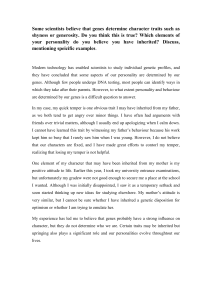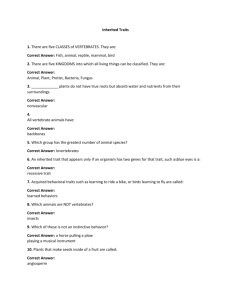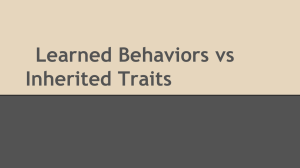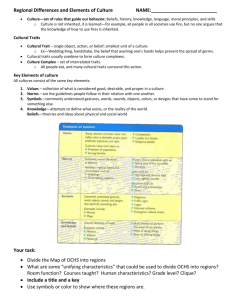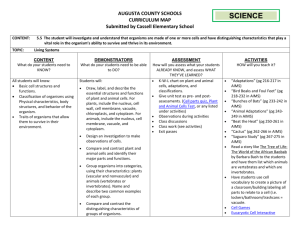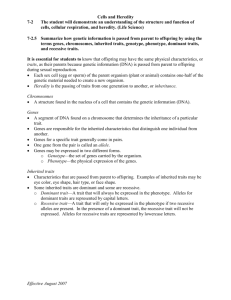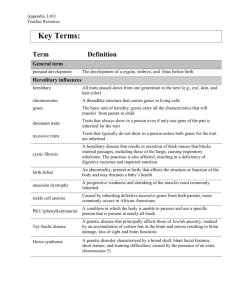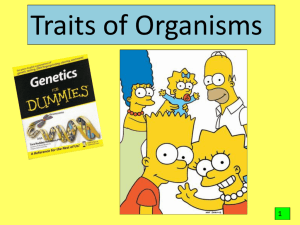Newsletters - Cobb Learning
advertisement
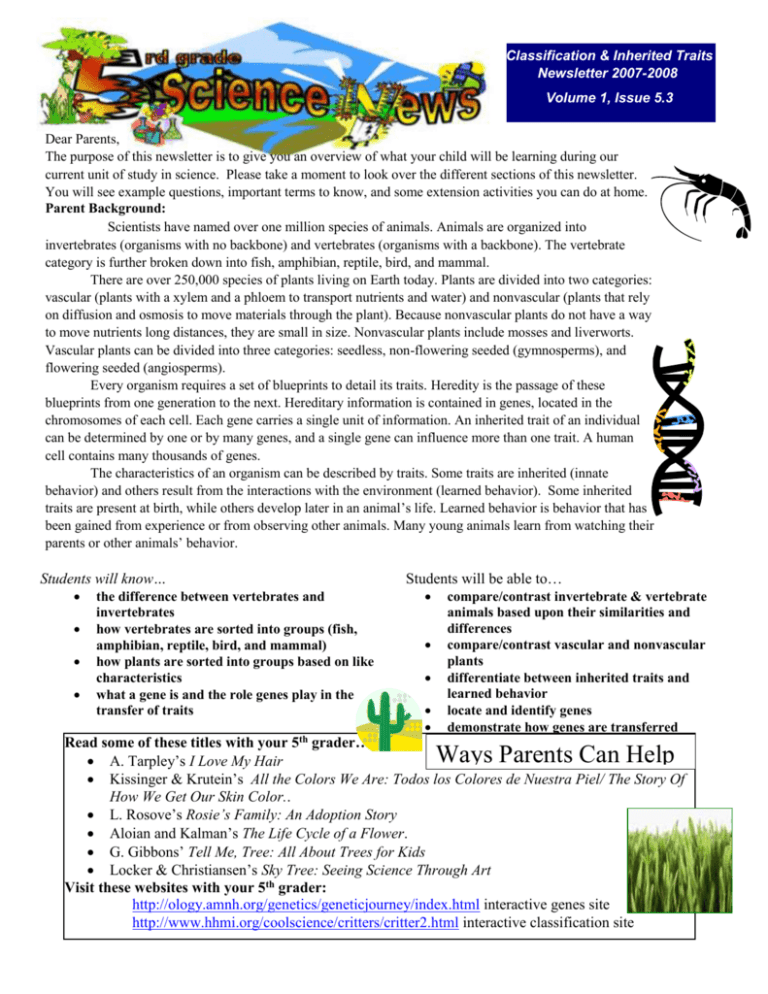
Classification & Inherited Traits Newsletter 2007-2008 Volume 1, Issue 5.3 Dear Parents, The purpose of this newsletter is to give you an overview of what your child will be learning during our current unit of study in science. Please take a moment to look over the different sections of this newsletter. You will see example questions, important terms to know, and some extension activities you can do at home. Parent Background: Scientists have named over one million species of animals. Animals are organized into invertebrates (organisms with no backbone) and vertebrates (organisms with a backbone). The vertebrate category is further broken down into fish, amphibian, reptile, bird, and mammal. There are over 250,000 species of plants living on Earth today. Plants are divided into two categories: vascular (plants with a xylem and a phloem to transport nutrients and water) and nonvascular (plants that rely on diffusion and osmosis to move materials through the plant). Because nonvascular plants do not have a way to move nutrients long distances, they are small in size. Nonvascular plants include mosses and liverworts. Vascular plants can be divided into three categories: seedless, non-flowering seeded (gymnosperms), and flowering seeded (angiosperms). Every organism requires a set of blueprints to detail its traits. Heredity is the passage of these blueprints from one generation to the next. Hereditary information is contained in genes, located in the chromosomes of each cell. Each gene carries a single unit of information. An inherited trait of an individual can be determined by one or by many genes, and a single gene can influence more than one trait. A human cell contains many thousands of genes. The characteristics of an organism can be described by traits. Some traits are inherited (innate behavior) and others result from the interactions with the environment (learned behavior). Some inherited traits are present at birth, while others develop later in an animal’s life. Learned behavior is behavior that has been gained from experience or from observing other animals. Many young animals learn from watching their parents or other animals’ behavior. Students will know… the difference between vertebrates and invertebrates how vertebrates are sorted into groups (fish, amphibian, reptile, bird, and mammal) how plants are sorted into groups based on like characteristics what a gene is and the role genes play in the transfer of traits Students will be able to… compare/contrast invertebrate & vertebrate animals based upon their similarities and differences compare/contrast vascular and nonvascular plants differentiate between inherited traits and learned behavior locate and identify genes demonstrate how genes are transferred Read some of these titles with your 5th grader… A. Tarpley’s I Love My Hair Kissinger & Krutein’s All the Colors We Are: Todos los Colores de Nuestra Piel/ The Story Of How We Get Our Skin Color.. L. Rosove’s Rosie’s Family: An Adoption Story Aloian and Kalman’s The Life Cycle of a Flower. G. Gibbons’ Tell Me, Tree: All About Trees for Kids Locker & Christiansen’s Sky Tree: Seeing Science Through Art Visit these websites with your 5th grader: http://ology.amnh.org/genetics/geneticjourney/index.html interactive genes site http://www.hhmi.org/coolscience/critters/critter2.html interactive classification site Ways Parents Can Help Vocabulary classification: the grouping of organisms based on their similarities and differences vertebrate: an animal that has a backbone invertebrate: an animal that does not have a backbone botanist: a scientist who studies plants vascular plant: a plant that moves water and food from its roots to its stems and leaves Well what about the mature student through tube-like structures. having trouble with weight and couldn'ttissues tell his old tons nonvascular plant: a plant that absorbs water mass? through He its surface because it lacks tube-like structures to move food and water. from his Newton inherited trait: a characteristic that is passed from parents to their offspring learned behavior: a behavior that an animal develops by observing other animals or by being taught offspring: new organisms that come from parent organisms Sample gene Test Prep Question #1 Sample Test Prep Question #2 Which of the following would be classified as a vertebrate? Which is a trait people are born with? A. ability to play the piano B. ability to speak a language C. color of eyes D. dislike for certain foods Genetic Joke Question: What do you get if you cross a parrot with a lion? Answer: “I don’t know, but when it talks you better listen!” Answers to Test Prep: 1) D has a backbone 2) C
